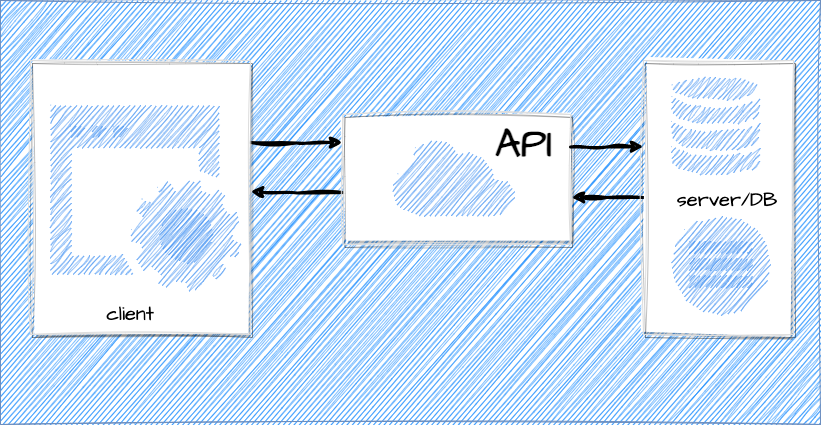In today’s interconnected world, Application Programming Interfaces (APIs) play a crucial role in facilitating data exchange and communication between software applications. APIs are the building blocks of modern software development, enabling developers to integrate their applications with third-party services and leverage existing functionality. In this article, we will discuss the various API types and best practices for designing and implementing your own API.

Understanding API Fundamentals
What is the API?
Application Programming Interface (API) is a system of rules and protocols that enables software applications to communicate with one another. It specifies the methods, data formats, and conventions that applications must adhere to for effective interaction.
How do APIs work?
APIs function by supplying an abstraction layer between applications. When an application wishes to access specific functionality or data from another application, it sends a request to the API, which then processes and returns the appropriate response. This allows applications to communicate without needing to comprehend each other’s inner workings.
The advantages of using APIs:
- Reusability: APIs enable developers to utilize existing functionality and services, thereby reducing the time and effort required to develop new features.
- Scalability: APIs facilitate the integration of multiple applications, thereby facilitating the development of complex systems able to accommodate growing user demand.
- APIs offer a modular and flexible approach to software development, allowing developers to mix and match components as required.
- APIs encourage collaboration between teams and organizations, allowing for the sharing of resources and the development of innovative solutions.
Types of APIs
1. Web API

Web APIs are extensively used to facilitate communication between web-based applications. They consist of:
- RESTful APIs: Representational State Transfer (REST) APIs are founded on a set of architectural principles that use standard HTTP methods (GET, POST, PUT, DELETE) to perform resource operations. They are portable, scalable, and broadly adopted.
- SOAP APIs: Simple Object Access Protocol (SOAP) APIs employ XML-based messaging protocols to facilitate application-to-application communication. They are renowned for their durability, extensibility, and support for advanced features like encryption and authentication.
- GraphQL APIs offer a flexible query language that enables clients to request specific data structures and reduces the over-fetching and under-fetching of data. They offer granular control over data retrieval, making them suitable for complex data needs.
2. Library/APIs
Library APIs are collections of functions and classes that offer specialized functionality within a programming language or framework. Examples include:
- Language-specific libraries: These APIs are intended to provide additional functionality and simplify common duties within a particular programming language, such as the requests library for making HTTP requests in Python.
- Framework-specific APIs: Frameworks such as Django and Ruby on Rails provide APIs for developers to interact with the framework’s features, such as database access and authentication.
- Operating System APIs: Operating System APIs allow applications to communicate with the underlying operating system. Examples include:
- The Windows API enables developers to construct Windows applications and gain access to diverse system functions and resources.
- The POSIX API is a set of standards that define the interface between Unix-like operating systems and applications, allowing for cross-platform compatibility.
- MacOS provides a set of APIs for developers to interact with specific operating system functions, such as accessing hardware features or integrating with Apple services.
Creating and Implementing Your Own API
- Define your use case and requirements: Prior to delving into API development, define your use case and requirements in detail. Understand the functionality your API must provide, the data it will manage, and the interactions with other applications that are anticipated.
- Select the most appropriate API style: Based on your use case and requirements, select the API style that best meets your needs. Due to their accessibility and scalability, RESTful APIs are widespread in web-based applications. SOAP APIs are an excellent option when sophisticated features such as encryption or transaction management are needed. GraphQL APIs provide flexibility in data retrieval for complex data structures.
- Design your API endpoints and data structures: Define the request and response data structures, as well as the anticipated data formats (such as JSON or XML).
- Implement the API using the programming language or framework of your choice: Choose a programming language or framework that corresponds with the needs and expertise of your project. Utilize libraries or frameworks that offer tools for constructing APIs, managing HTTP requests, and serializing/deserializing data.
- Protect your API with authentication and authorization methods: Implement authentication mechanisms (such as API keys, OAuth, or JWT) to restrict API access to only authorized applications.
- Best practices for documentation and version control: Include detailed descriptions of endpoints, request/response formats, and example use cases in the documentation of your API. Provide code samples and interactive documentation if feasible. As your API evolves, implement versioning strategies to manage backward compatibility.
- Testing and debugging your API: Establish exhaustive testing procedures to verify the API’s functionality and behavior. Create unit and integration tests, as well as simulate real-world scenarios. Utilize tools such as Postman and Curl for manual testing. Effectively debug and manage errors by providing informative error messages and HTTP status codes.
Best Practices for Developing APIs
- Consistent nomenclature standards and API architecture:
For endpoints, resources, and parameters, use explicit and consistent naming conventions. Organize your API structure in a logical manner to make it easy for developers to comprehend and navigate. - If you choose RESTful architecture, adhere to RESTful design principles such as resource-based URLs, HTTP methods, statelessness, and the use of appropriate HTTP status codes to represent responses.
- Use appropriate HTTP methods and status codes: Use HTTP methods (GET, POST, PUT, DELETE) accurately to reflect the action intended on resources. Return the appropriate HTTP status codes to signify a request’s success or failure.
- Employ rate limiting and throttling: Implement mechanisms to prevent API abuse and guarantee equitable usage. Utilize rate limiting and throttling techniques to regulate the number of permitted requests within a given time frame.
- Handle errors gracefully by providing informative error messages: When errors occur, provide developers with clear and descriptive error messages that explain what went wrong and how to fix the problem. Include error codes, explanations, and prospective solutions.
- Optimize API performance and scalability by minimizing superfluous data transfers, leveraging caching mechanisms, and optimizing database queries. API should be designed to be horizontally scalable to accommodate increasing traffic.
- Implement versioning and deprecation strategies: As your API evolves, you should implement versioning mechanisms to preserve backward compatibility. Clearly communicate any deprecations or disruptive changes and provide developers with a timeline for upgrading to newer versions.
Frameworks and Tools for Building APIs:
- API development frameworks: Popular frameworks such as Express (Node.js), Django (Python), and Laravel (PHP) offer robust tools for developing APIs with features such as routing, request handling, and middleware administration.
- Documentation tools: Swagger, Postman, and OpenAPI Specification (OAS) are examples of API documentation tools. Documentation generation, API exploration, and interactive testing are all automated.
- Utilize tools such as Postman, Newman, and pytest to automate API testing, validate responses, and ensure functionality.
By understanding the various types of APIs and adhering to best practices for designing and implementing your own API. You can create robust and scalable solutions that enable developers to seamlessly integrate with your software. APIs have become the linchpin of contemporary software architecture, enabling innovation and nurturing global developer collaboration.
Remember that writing a well-designed and well-documented API can streamline the integration process for developers and give your software a competitive advantage in today’s interconnected ecosystem.
What are you waiting for, then? Start creating your own API to unleash your software’s true potential!

